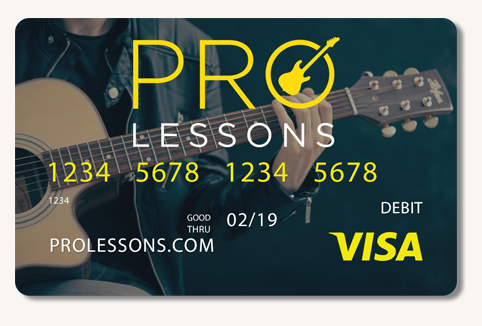FREE LESSON
PHIL KEAGGY - Grammy nominated and seven-time Dove Award winner, is one of the world’s great guitar players and a pioneer in contemporary Christian music.

Learning guitar can be difficult at first, especially trying to develop guitar calluses. While perhaps not the best way to sell someone on learning to play guitar, it does happen to be true.
Aside from issues like practice time availability and cost, one of the biggest complaints that guitar newbies have is that playing guitar hurts their fingers. It would be easy to respond to this with some kind of “Man up” speech that includes the phrase “toughen up, buttercup,” but finger soreness is a real topic that needs to be addressed, especially for beginners.
After coming home from a workout session at the gym, you’re going to feel soreness in whatever muscles you used that day. That pain is caused from you essentially tearing your muscles so that they can grow back stronger and/or bigger.
On a smaller scale, that’s roughly the same thing you’re doing to your fingertips when playing guitar. If you fight through the pain enough, you’re going to develop calluses. For anyone who may be unfamiliar, calluses are tough patches of skin, usually found on the hands and feet, that have been hardened from excessive amounts of use.
As a guitar player, you want to have calluses on your fingertips because it allows you to play longer without having that pain set in. By building up these patches of skin, you can enjoy a jam session without thinking about your hurting fingertips every 10 seconds.
Calluses are the mark of an experienced guitar player. In order to help you look the part, we’ve compiled a list of a few ways you can develop guitar calluses faster.
This is one of those pieces of advice that is usually met with an eye roll. When it comes to improving anything to do with playing guitar, the answer is usually to practice more.
For developing guitar calluses, though, there really is no quick fix. Beating up your fingers is a good way to get calluses, but you also want to avoid blisters like the plague. Blisters will force you to put down the guitar for a while because it will be too painful to play. In addition to that, blisters won’t give you the benefits that calluses will.
Picking up and playing your guitar in a consistent routine will do wonders for your fingertips.Try to play a little bit every day instead of having one long practice session each week. This will be the difference between getting calluses and having to endure blisters.
Another practice-related tip that we can give you is to play an acoustic guitar with steel strings. There are certain benefits to learning guitar on electric or acoustic that we covered in an earlier post here.
One of the biggest pros to learning to play on an acoustic guitar is that the tougher steel strings will force you to find those calluses fast. Electric guitars can be easier to play for a few other reasons, but they have softer strings than their acoustic counterparts.
The advantage to playing an acoustic guitar is that you will have no problems moving on to an electric guitar, but going the opposite path (from electric to acoustic) you’re going to be in for a world of hurt.

Finally, a tip for developing guitar calluses that isn’t just playing the guitar.
Many guitar players find unconventional means to toughen up their fingertips. While playing your guitar is best, you’re not always going to have it with you. Unless you’re a professional musician, there’s a strong chance that you spend a large portion of your day away from your instrument.
It can be helpful to find everyday items that will help you to develop calluses faster. Some people suggest using an old credit card as a method for strengthening your fingers. Just place the card in your palm and curl your fingers over to press against the edges of the card.
The top ridge of a soda can is another common item that you can use to build calluses. The rounded aluminum is solid enough for you to press firmly, but not so sharp that you’ll actually hurt yourself. Pro tip: a sealed can will be much more useful than an empty one.
If you don’t feel like carrying around any foreign objects, you can even use your thumbnails to condition your fingertips.
No matter where you are, there are a variety of items that you can use to build calluses while your guitar sits at home.
Something really simple that will help you form calluses faster is to make sure your hands are dry when picking up your guitar. The drier your hands are, the easier it will be for calluses to set in. When our hands are wet, the skin isn’t in the best condition for toughening up.
Make sure your hands are good and dry before starting any practice session.
Many guitarists use creams or other substances on their fingertips to either numb the pain after playing or to prepare them for future playing.
One popular idea is to put rubbing alcohol on your fingertips. Similar to what was earlier said about dry hands, the alcohol will further dry out your fingertips so that calluses have the perfect environment to set in. You can do this daily using either cotton balls or wipes.
As for helping with hurting fingers after playing, soaking them in apple cider vinegar is a good home remedy to try out.
If you don’t feel like rummaging around for an old credit card, there are actually companies out there that make tools intended to strengthen your fingers. Some of these are aimed more at providing therapy, but there are plenty out there specifically for musicians.
An example of a tool that is mainly used for therapy, but is also helpful for guitar players developing guitar calluses can be found here on Amazon. If you’re looking for something targeted just for playing guitar and other stringed instruments, you may want to check out the Ruff Grip.
Whichever of these tips you stick with, we hope you find something that works for you and helps you to develop calluses as fast as possible. When it comes to learning guitar, there are a lot of resources at your fingertips (pun intended). You may find that enrolling in some guitar lessons would be beneficial for you. We certainly think they’re important.
If you would like to learn more about the affordable online guitar lessons provided here at Pro Lessons, click on the banner below.